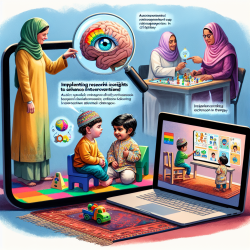Introduction
As a practitioner in the field of therapy, understanding the intersection of religion, spirituality, and health can significantly enhance your practice. The research article "Religion, Spirituality, and Health: The Research and Clinical Implications" by Harold G. Koenig provides a comprehensive overview of how religious and spiritual practices impact both mental and physical health. This blog will explore key findings from the research and discuss how practitioners can integrate these insights into their practice to improve patient outcomes.
Key Findings
The research highlights several ways in which religion and spirituality (R/S) influence health:
- Mental Health: R/S practices are associated with positive mental health outcomes such as increased well-being, happiness, hope, and optimism. They also help reduce negative outcomes like depression, anxiety, and substance abuse.
- Physical Health: R/S involvement is linked to healthier behaviors such as reduced smoking and alcohol consumption, better diet, and increased physical activity, which contribute to improved physical health and longevity.
- Coping Mechanism: R/S provides a framework for coping with adversity, offering psychological resources that help individuals manage stress and life challenges more effectively.
Clinical Implications for Practitioners
Practitioners can leverage the findings from this research in several ways:
- Incorporate Spiritual Assessments: Conduct brief spiritual histories during patient evaluations to understand the role of R/S in their lives and how it may affect their health and treatment decisions.
- Respect and Support R/S Beliefs: Acknowledge and respect patients' R/S beliefs, integrating them into the treatment plan where appropriate. This can enhance patient engagement and compliance with treatment.
- Collaborate with Spiritual Leaders: Work with chaplains or spiritual leaders to address patients' spiritual needs, ensuring a holistic approach to care that encompasses mind, body, and spirit.
- Educate and Train: Seek training on the intersection of R/S and health to better understand how these factors influence patient outcomes and how to integrate them into practice effectively.
Encouraging Further Research
While the existing research provides valuable insights, there is still much to learn about the nuanced ways R/S influences health. Practitioners are encouraged to engage in further research and contribute to this growing field. By doing so, they can help build a more comprehensive understanding of how to integrate R/S into therapeutic practices effectively.
Conclusion
Integrating religion and spirituality into therapy offers a promising avenue for enhancing patient care. By understanding and applying the research findings, practitioners can improve their skills and provide more holistic, patient-centered care. For those interested in exploring this topic further, the original research paper provides a wealth of information and can be accessed here.










